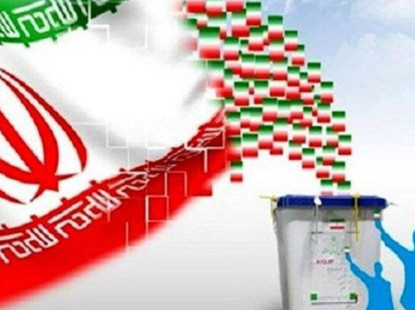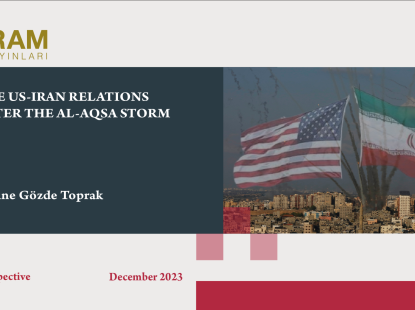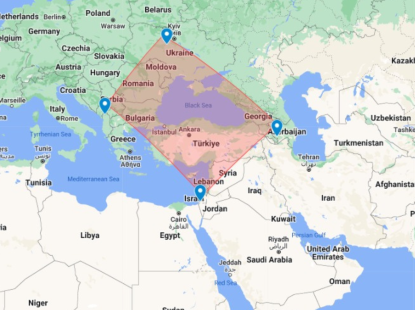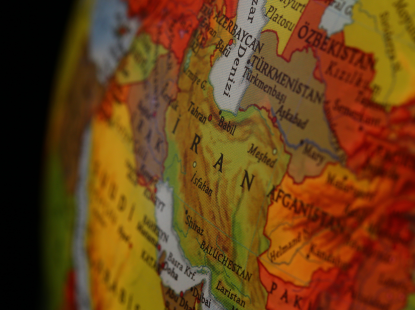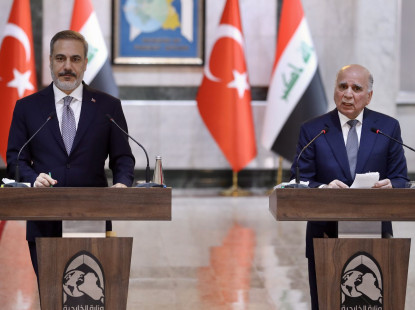Since the Islamic Revolution, the Islamic Republic of Iran's interest in Africa has continued
Iran's Approach to the African Continent and Its Strategic Objectives
Since the Islamic Revolution, the Islamic Republic of Iran's interest in Africa has continued. In the forty-five years since the revolution, many things have changed and transformed, both in a global context and within the continent, as well as in the context of Iran's domestic policy. However, despite these changes and transformations, some changes have occurred in Iran's policy towards the continent, but the essentials of its policy have continued without losing their essence.
Iran's Africa Policy
Iran's Africa policies have a multi-layered structure and are generally aimed at strengthening the country's geopolitical position and creating an entity that will support its foreign policy goals. The strategic goal of these policies is to project Iran as a power beyond being a regional force, to pressure its rivals, particularly the United States, in other geographies to gain political and economic advantages, to mitigate the impact of sanctions against it, and to neutralize the political isolation strategy directed at it by forming alliances.
To achieve these strategic objectives, Iran employs various tactical-level policies. In addition to general approaches, Iran often identifies the problems faced by target countries and makes concrete proposals accordingly. Efforts to establish closeness through diplomatic, political, security, maritime, health, education, trade, and cultural exchanges are frequently made alongside offers of infrastructure provision and technology transfer.
On the other hand, Iran pursues a "pivot to Africa" policy in response to the need to combat sanctions and export its revolutionary worldview. In this context, Iran aims to combat isolation and sanctions by forming partnerships with states, autonomous regions, and non-state actors. Broadly using both hard and soft power instruments, Iran has taken more serious and intensive steps to expand what it conceptualizes as the "Axis of Resistance," especially after the killing of Qasem Soleimani. This has led Iran to pivot towards Africa to establish a stronger presence with state and non-state actors on the continent. Iran's "pivot to Africa" policy aims to expand its geographical influence across the continent. The Quds Force, affiliated with the Revolutionary Guards, has been tasked with conducting cross-border operations. The Quds Force has identified a half dozen new points of conflict in Africa. Following Soleimani, Ismail Qaani, appointed by the Supreme Leader Ali Khamenei to "extend the country's strategic depth beyond the Middle East to Africa," activated these forces to expand the Axis of Resistance. From arms smuggling to oil smuggling, and from providing weapons to terror groups to educational activities, units affiliated with the Quds Force are enhancing Iran's strategic depth in Africa.

Source: Prepared by the author.
Iran's soft power activities on the continent date back much further. Since the revolution, Iran has carried out these activities through key institutions such as the Mostazafan Foundation, the Iranian Red Crescent, the Ministry of Islamic Guidance and Culture, the Organization of Culture and Islamic Communication, and Al-Mustafa University. In addition to these institutions, parliamentary groups, friendship associations, chambers of commerce, charitable organizations, religious seminaries, and universities are involved. It is worth noting that the Jihad of Construction has actively provided various kinds of support to countries and groups on the continent through development programs.
Layers of Iran's Approach to the Continent
The Islamic Republic of Iran is a state built on ideological foundations, shaping its policies and institutions on these foundations. The Iranian Constitution conceptualizes a structure based on the dualism of the oppressed (mustazafin) and the oppressors (mustakbirin). According to this, Iran claims to stand with the world's oppressed against the oppressors. This is specifically emphasized in several parts of its Constitution. For example, Article 154 of the Iranian Constitution states, "The Islamic Republic of Iran considers the happiness of humanity at all levels as an ideal. It recognizes freedom, justice, and the rule of law as the right of all humanity. Therefore, while completely refraining from interfering in the internal affairs of other nations, it supports the struggle of the oppressed against the oppressors everywhere on Earth." Thus, the Iranian regime has constitutionally declared that it will stand with the oppressed against the oppressors, regardless of belief or race. Viewing the solution in revolutions similar to its own, Iran has been offering its revolution as a prescription to other groups since the early years of the revolution.
Specifically looking at Africa, Iran progresses its contacts with state or non-state actors on three levels. If the counterpart belongs to a religion other than Islam or such groups are in the majority in that country, Iran offers "humanitarian" aid and proposals that directly address the needs and attract the actor. This includes technology transfers, economic agreements, building hospitals and orphanages, educational activities, student exchange programs, and arms trade, among others. If the counterpart actor is Muslim but not Shia, Iran emphasizes "unity," arguing that "sectarian differences do not matter" and that "there should be a united front against the enemies of Islam," promising that "the Islamic Republic of Iran will stand by and support all Muslims in the world." If the targeted actor is Shia, direct efforts are made to build a proxy force within the resistance axis. If these groups are under a strong central state structure, propaganda activities are conducted to gain ground. If they are under a failed state structure, a path leading to arms and military equipment is followed.
The issue of Palestine also plays a significant role in Iran's propaganda activities. The choice of the name "Quds Force" for the unit of the Revolutionary Guards conducting foreign operations is no coincidence. The existence of the structure conceptualized as the "Axis of Resistance" and Iran's role in it is legitimized using the situation in Palestine as fertile ground. Therefore, these groups do not want other actors, like Turkey, to have a presence or, metaphorically, "steal the role" in the issue of Palestine. According to this propaganda, Iran is the only country taking concrete steps regarding Palestine, acting with a Muslim reflex, unlike the leaders and governments of other "so-called Muslim" countries, which are under Western influence and cannot make independent decisions. Thus, the propaganda suggests that Muslim states under Western influence cannot be more effective in the Palestinian issue than Iran, and their actions are merely for show. Through this narrative, Iran aims not only to influence the Muslim population in the region but also to expand its base in Africa.
Iran's activities on the continent have found supporters as well as attracted criticism. Especially due to its relationships with non-state actors, Iran has experienced diplomatic tensions with many countries. It has faced serious problems with countries like Morocco, Sudan, and Gambia, managing to re-establish relations with some. However, as in the case of Morocco, relations with some countries remain severed. In summary, despite all adversities, Iran has not deviated from its strategic goals for 45 years, through various conjunctural changes. It aims to expand the geographical boundaries of what it calls the resistance axis and increase its power projection by spreading to Africa and South America.




